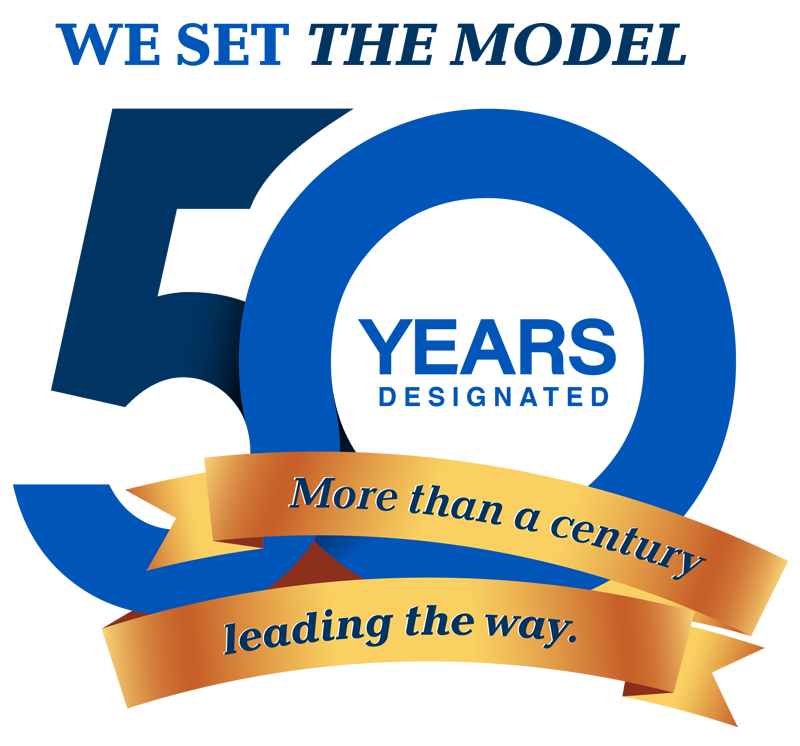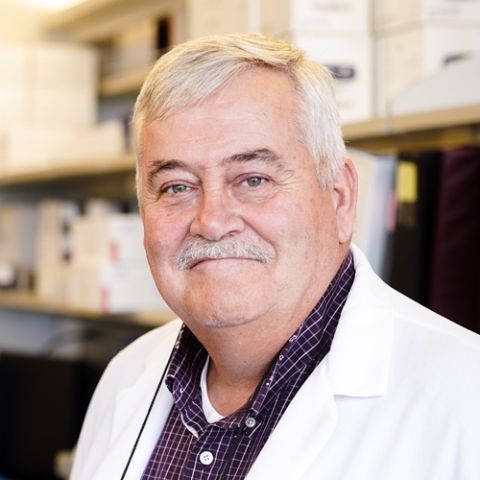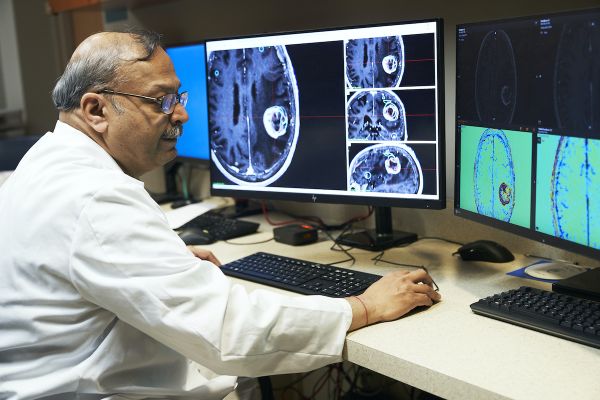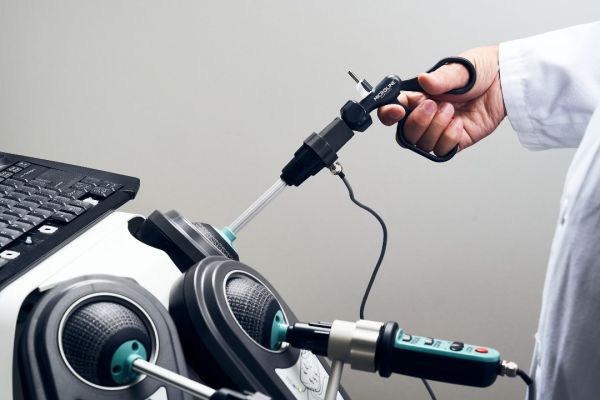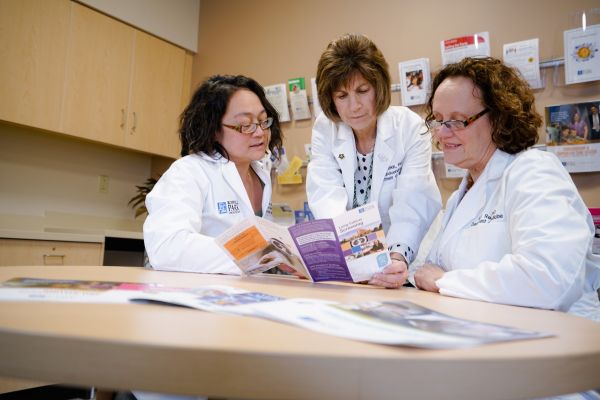In 1971, Congress passed the National Cancer Act and made the fight against cancer a national priority. To mark the 50th anniversary of the National Cancer Act, we'll be highlighting important moments, people and innovations from our 120-plus-year history that have impacted the world of cancer and beyond.
To learn more about the NCA and our role as one of the first designated comprehensive cancer centers visit: RoswellPark.org/WeSetTheModel
Cancer research is an ever-evolving field, with doctors and scientists racing to find the next new revolutionary therapy to help unlock the disease’s mysteries.
One of the biggest changes in cancer care came this century, starting in the early 1990’s and completed in 2003, when scientists working on the international Human Genome Project completed mapping the human genome, the set of genetic instructions made from our DNA that tells our body’s cells how to grow and develop. The project set out to identify and determine the order or sequence of the more than 20,500 genes found in human DNA.
A key part of this was the ability to sequence base pairs, little coded pieces of DNA that pair with each other to bond the two strands of DNA together, like the rungs of a ladder holding the two sides together. The next step in understanding cancer was to see how changes in these base pairs might disrupt this ladder-like structure. As the Human Genome Project progressed changes in base pairs were identified in cancer, typically referred to as mutations, and eventually therapies were developed based upon these findings leading to the concept of personalized medicine to treat these cancers.
Roswell Park’s role in the Human Genome Project
A group of volunteers from Roswell Park Comprehensive Cancer Center, five in all, donated their blood for research purposes at the beginning of the Human Genome Project. Blood from two of these volunteers, a man and a woman known only as RP5 and RP11, was used to create the initial framework for sequencing the human genome. This framework, referred to as bacterial artificial chromosomes, or BACs, are fragments of DNA from 250,000 to 500,000 base pairs in size that researchers used to align the final DNA sequence of the human genome.
“While today we can sequence fragments of DNA up to a million base pairs in length, at the time of the human genome project this was limited to about 500 base pairs ,” explains Carl Morrison, MD, DVM, Senior Vice President of Scientific Development and Integrative Medicine and Director of the Division of Molecular Pathology at Roswell Park. “In the Human Genome Project a single BAC clone a few hundred thousand base pairs in size was randomly fragmented into much smaller pieces a few hundred base pairs in size. These fragments were sequenced into these, and with the help of computational analyses were reassembled to determine the full sequence of that BAC clone. Each of the thousands of BAC clones for RP11 were fragmented and sequenced in this fashion to assemble the final human genome, so yes, Roswell Park researchers made a monumental contribution to the Human Genome Project.
Decoding DNA meant unlocking personalized therapies
Being able to understand and read DNA made it possible for researchers to find mutations within the genome and develop therapies aimed at attacking those specific mistakes. “The first mutation we were able to identify and create therapies for was in breast cancer.” Scientists found that some breast cancer cells had a change in a gene called HER-2 that caused them to make extra copies of this gene that resulted in the production of a growth-promoting protein. Creating a therapy that could target HER-2 could more effectively target those cancers with this type of change. As time evolved and similar changes were found in other genes, such as lung cancer and melanoma, these types of therapies became known as targeted therapies.
“From a patient perspective what made targeted therapies so different from chemotherapy and radiation is the lack of significant side effects. From a medical perspective, the treatment effects were much more durable, or longer lasting for targeted therapies,” Dr. Morrison explains. “Even when people take chemo today and get a significant rapid response of a reduction of cancer in their body, six months later it will often return. With targeted therapies, tumor reduction is much slower, but they’re able to stay on the therapy for longer because they have minimal side effects, and the cancer can be suppressed for decades.” Some people began taking targeted therapies as Roswell Park patients 10 years ago or more and are still doing well.
“There is no doubt that in my lifetime, sequencing the human genome is the biggest thing that’s happened for cancer care,” Dr. Morrison says. “Nothing even compares to it. They put robotics into surgery and that’s improved things; radiology has utilized digital imaging for CTs and MRIs, but there hasn’t been a huge technological breakthrough that compares to sequencing the human genome.
We Set the Model
50 years as an NCI-designated comprehensive cancer center and more than a century leading the way. Learn more about Roswell Park's place in history as we became a model for other cancer centers around the world.
Learn MoreUp next: Predicting cancer based on a blood test
Of course, Roswell Park and the field of personalized medicine aren’t just looking at the past, but are also thinking of the future and next frontier in innovation for cancer care.
Dr. Morrison says the next big thing to change cancer care will be the ability to detect, through a blood test, someone’s risk of developing cancer long before it happens.
“From what we’ve learned from sequencing the genome, we’re finding answers,” he says. “You’ll be able to sit at the table with someone and say that while they have no symptoms today, and a CT scan or MRI won’t show anything, sometime in the next few months or years they are going to have a high risk for cancer. That’s the next frontier and that’s where we need to be moving.”
To make such predictions we need to know the processes that initiate mutations before they actually occur. “If we know why, and we can identify those factors before mutations occur, we can predict early development of cancer long before a mutation happens,” he says. “Sometime in the next five to 10 years, when you go to the doctor, in addition to the normal procedures of taking your blood pressure, checking for glucose levels, anemia, and high lipids, a blood test will be performed to predict your risk of cancer over the next few years in the future. This will be a transformative change in cancer care and with early detection we will see the next major advance in minimizing the impact of this disease.”
The other side of that coin is that people who don’t show significant cancer risk might be able to reduce the frequency of their early detection screenings, like mammograms and prostate exams.
Shifting to prevention and mitigation has happened before, with heart failure, but on a smaller scale because it’s a smaller group of people facing significant cardiovascular disease at an early age than those who are at risk for cancer, Dr. Morrison says.
“We could have preventive therapies 10 to 15 years from now. It’s not unreasonable to think that will occur,” he says. “This will be disruptive. People will change their lives because of this. Roswell Park will be on the leading edge of this.”

